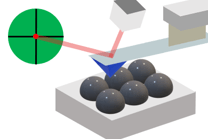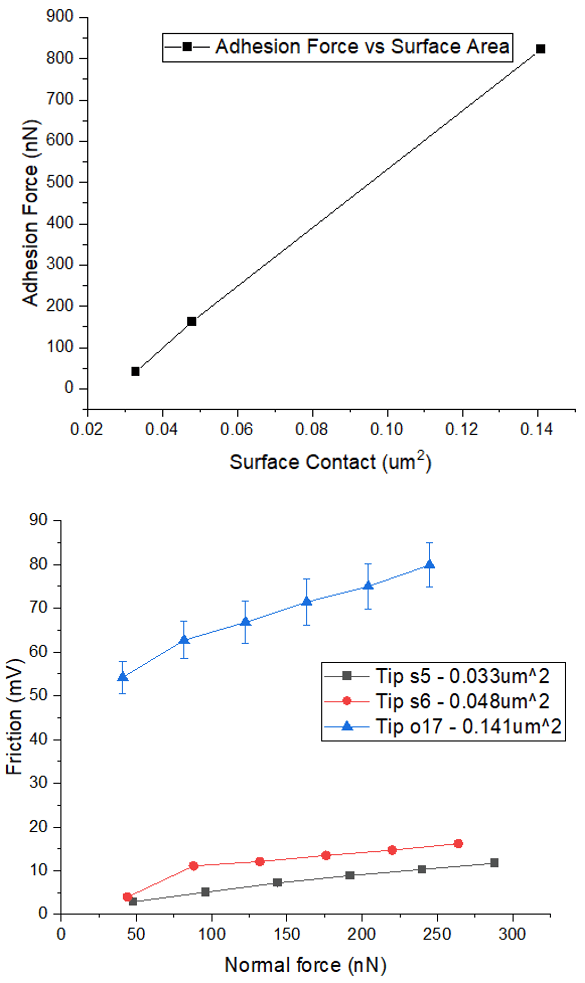Atomic-Level Friction: Adhesion and Shear Force Analysis
Student: Zach Kauffman
Major Professor: Dr. Greg Salamo
Research Area(s):
Nanoscale Materials & Devices
Background/Relevance
- Atomic force microscopy (AFM) has been a foundation of nanoscale analysis for over twenty years, producing analysis of both morphology and friction.
- Understanding friction at the atomic scale is key to making improvements in frictional losses at the macroscale. Materials’ nanoscale roughness, shape of asperities, and surface-to-surface interactions all share relevance to atomic-scale friction.
Innovation
- Lateral force microscopy and analysis of grown surfaces can be used to exploit tribological phenomena; our experiment provides insight into finding ideal surface characteristics for instruments or materials, increasing efficiency.
Approach
- Find “smooth” AFM tips of various sizes (~100nm to ~300nm) to test frictional properties on an atomically smooth surface.
- Run force curve analyses on each to show relationship of tip contact area and adhesion forces, applying a range of normal forces.
- Isolate adhesion and shear friction forces by pinpointing the wear limit of the tips and surfaces.
-
Utilize LFM to establish a relationship between tip size/elasticity to shear force, creating a comparison of tip size to friction.

Key Results
-
There exists a linear relationship between adhesion force and contact area.
-
Surface area has a major effect on the adhesion force; when moving horizontally, this produces a lateral component to this force which is friction.
-
For small surface areas, there exists edge effects that take place at higher normal forces, producing an increase in friction that can eventually surpass larger surface areas’ friction.

Conclusions
-
Conventional models of friction that represent lateral resistance as simply a linear relationship between a coefficient and normal force are incorrect at the atomic scale.
-
Surface area and edge effects (shear force) play a massive role in friction and follow a saturation effect; this means that for many surfaces where large forces are expected, smaller contact area may increase resistance.
-
Friction depends on deformation (derived from elasticity) because it changes the contact area and, thus, the lateral component of the adhesive force.
